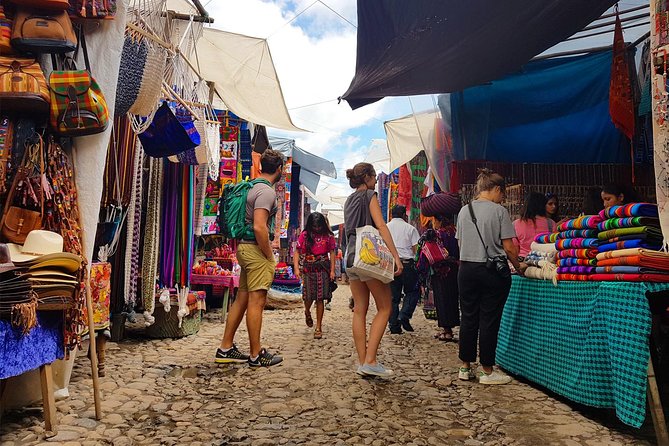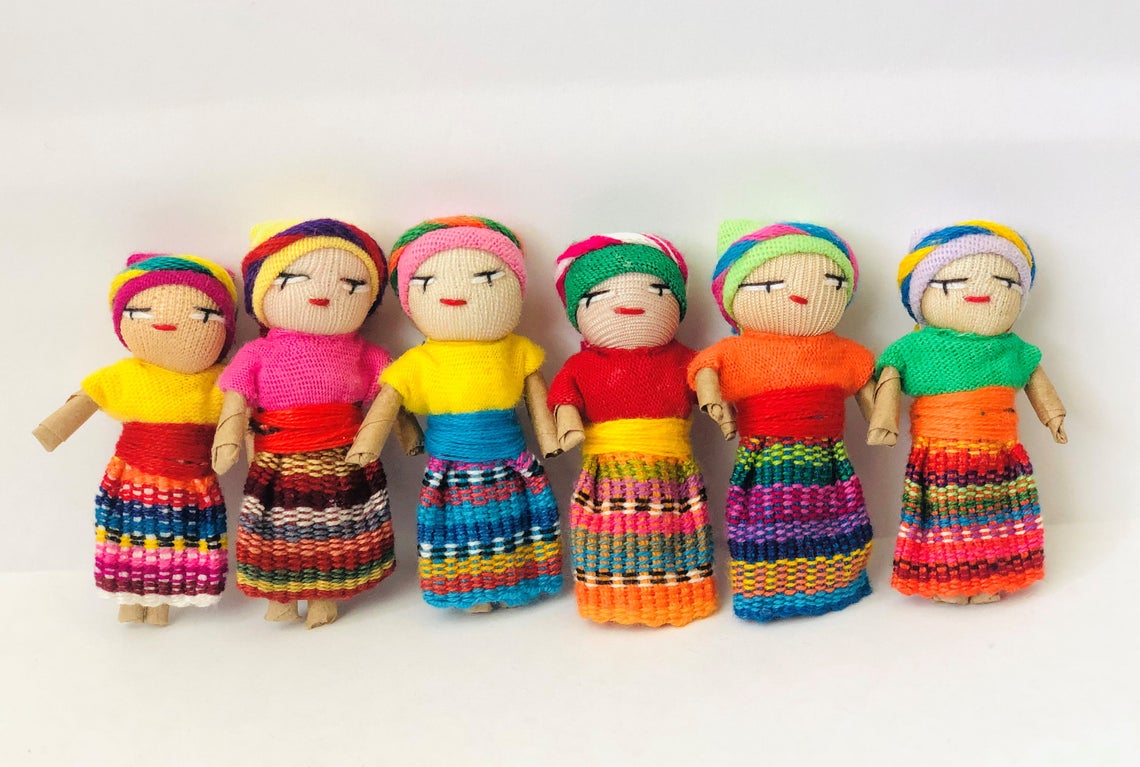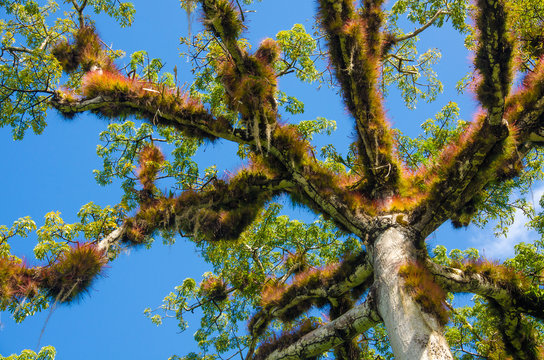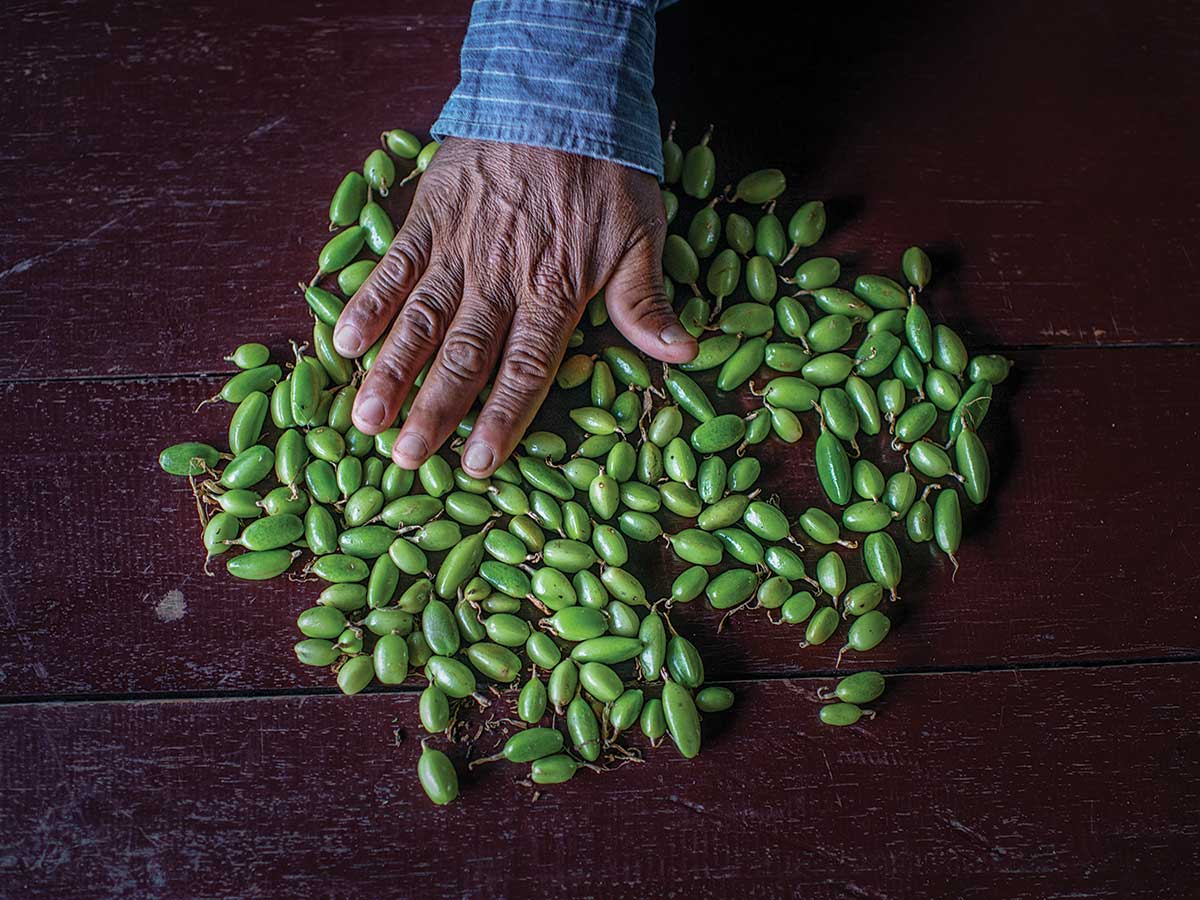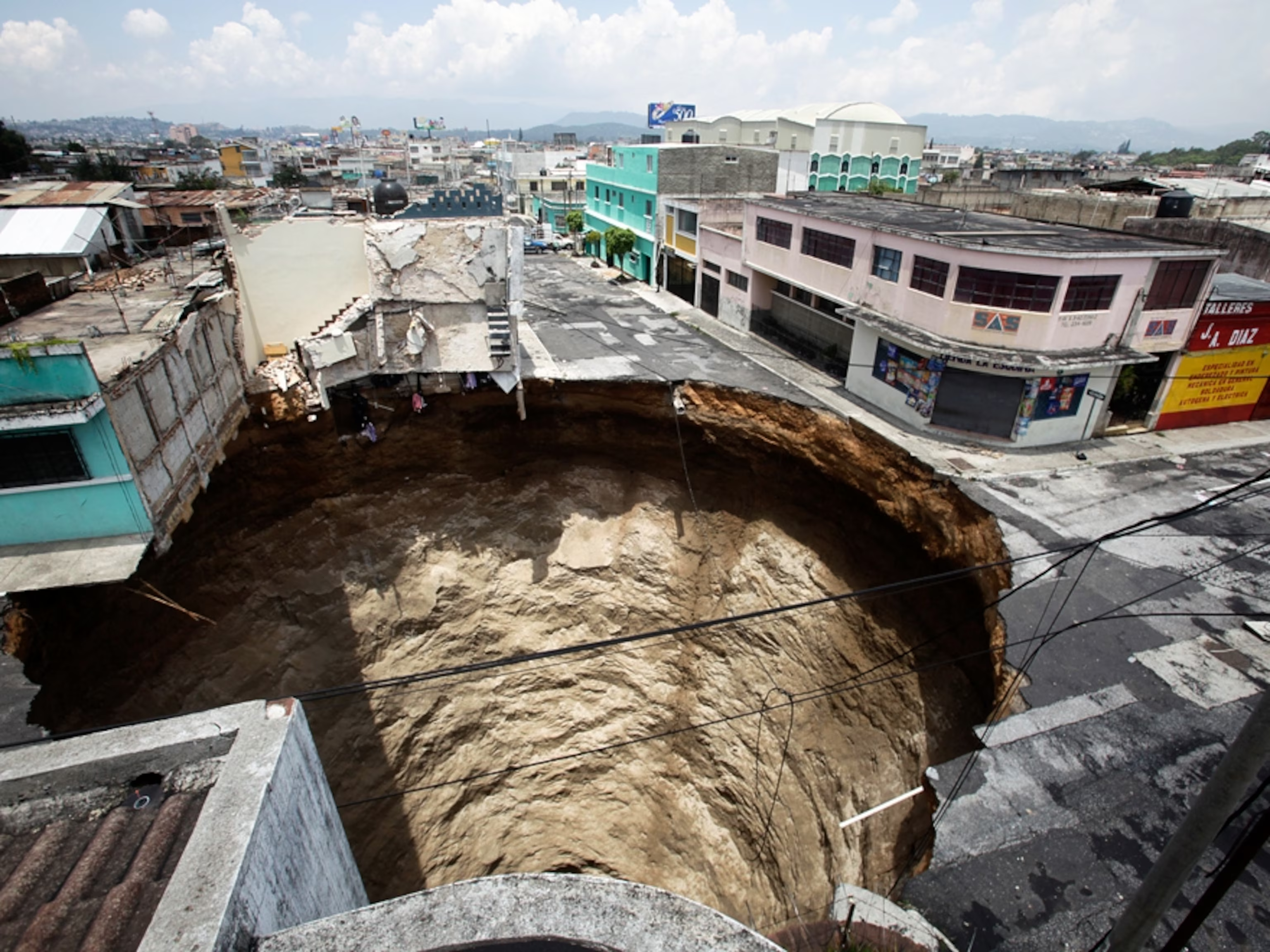About What Is Guatemala Known For - 22 Amazing Facts
Explore what Guatemala is known for, from stunning volcanoes to vibrant Mayan heritage. Discover unique highlights that make this country unforgettable.
Author:Sophia HarperReviewer:Liam JonesDec 03, 202420.8K Shares522.2K Views

Guatemala, a country in Central America, is renowned for its rich cultural heritage, stunning natural landscapes, and historical significance. It shares borders with Mexico to the north and west, Belizeto the northeast, Honduras to the east, and El Salvador to the southeast.
Guatemala is a country of contrasts, offering a unique blend of ancient Mayan ruins, colonial architecture, vibrant markets, and lush jungles.
1. Ancient Mayan Civilization
Guatemala is home to some of the most significant Mayan archaeological sites in the world. The ancient city of Tikal, located in the northern Petén region, is one of the largest and most well-preserved Mayan sites. Tikal was a major center of the Mayan civilization, featuring towering pyramids, temples, and plazas. The Great Jaguar Temple, one of Tikal's most iconic structures, stands as a testament to the architectural and astronomical prowess of the Mayans.
2. Guatemala Has A Unique Currency Named After The Quetzal
Guatemala's currency is called the quetzal, named after the national bird. The quetzal bird is a symbol of freedom and was considered sacred by the Maya. It is said that the bird would not survive in captivity, representing liberty. The vibrant currency features images of historic figures, landmarks, and the quetzal itself.
3. The Country Celebrates A Special Dance Of The Deer
The Dance of the Deer is a traditional Guatemalan ritual performed by Maya communities, representing the relationship between humans and nature. This dance, which often includes intricate masks and costumes, tells the story of a hunt and serves as a celebration of cultural identity and ancestral heritage.
See Also: What Is Nebraska Known For
4. Rich Cultural Heritage
Guatemala's cultural heritage is a vibrant tapestry woven from indigenous traditions and Spanish colonial influences. The country is home to a diverse population, including over 20 distinct Mayan ethnic groups, each with its language, customs, and traditional dress. This cultural diversity is particularly evident in the highland regions, where indigenous communities maintain their traditional ways of life.
5. Home To One Of The Largest Jade Markets In The World
Guatemala has been a significant source of jade for centuries. The ancient Maya crafted exquisite jewelry, masks, and ceremonial items from jadeite, the most prized type of jade. Today, Guatemala City and Antigua have thriving jade markets where artisans create modern and traditional designs.
6. Traditional Worry Dolls (Muñecas Quitapenas) Originated Here
Worry dolls, tiny handmade figurines dressed in colorful textiles, are a Guatemalan tradition. Children are told to share their worries with the dolls before placing them under their pillows at night. According to the belief, the dolls "take away" their worries by morning.
7. The Mayan Ball Game "Pok-A-Tok" Was Played In Ancient Guatemala
Guatemala was one of the regions where the Maya played Pok-A-Tok, a ritualistic ball game with spiritual significance. The game was played on large stone courts, and some remnants of these courts can still be seen at ruins like Tikal. The game was symbolic of the battle between life and death.
8. Stunning Natural Landscapes
Guatemala's natural beauty is diverse and awe-inspiring. The country boasts a range of landscapes, including volcanoes, lakes, mountains, and rainforests. Lake Atitlán, often described as one of the most beautiful lakes in the world, is surrounded by picturesque villages and three towering volcanoes. The lake's stunning blue waters and scenic backdrop make it a popular destination for tourists seeking relaxation and adventure.
9. It Has The Deepest Lake In Central America
Lake Atitlán, located in the Guatemalan Highlands, is not only stunning but also the deepest lake in Central America, with a depth of up to 340 meters (1,120 feet). Surrounded by villages and volcanoes, it’s a must-see destination for its natural beauty and cultural diversity.
10. The Ceiba Tree Is Guatemala’s National Tree
The ceibatree, known as the "Tree of Life," holds great cultural significance in Maya mythology, symbolizing the connection between the heavens, earth, and the underworld. Its impressive height and wide canopy make it a striking natural landmark.
11. Guatemala Is A Global Producer Of Cardamom
After India, Guatemala is the world's second-largest producer of cardamom, a fragrant spice used in both local cuisine and international exports. The crop thrives in Guatemala’s fertile soil and tropical climate, contributing significantly to the economy.
12. Guatemala Is Known For Its Unique Sinkholes
Guatemala City has experienced some dramatic sinkholes over the years due to its location on volcanic soil and limestone. The most infamous sinkhole appeared in 2010, swallowing a factory and part of a street, drawing global attention.
13. Traditional Handicrafts And Textiles
Guatemala is known for its vibrant and colorful handicrafts, particularly textiles. The traditional weaving techniques have been passed down through generations and are a significant part of the country's cultural identity. Markets like Chichicastenango offer a dazzling array of handmade textiles, pottery, wooden carvings, and jewelry. Each region in Guatemala has its unique patterns and styles, making these crafts a reflection of the local culture and heritage.
Related: What Is Switzerland Known For
14. Guatemalan Women Wear Traditional Huipiles
The huipil, a traditional blouse, is an essential part of women’s clothing in Guatemala. Each huipil is handwoven and often represents the identity, heritage, and region of the wearer. Designs incorporate vibrant patterns, symbolic animals, and geometric shapes.
15. The Marimba Is Guatemala's National Instrument
The marimba, a percussion instrument similar to a xylophone, is an essential part of Guatemalan culture. It is played at celebrations, festivals, and religious events, producing melodies that are a hallmark of Guatemalan music.
16. Guatemala Boasts A Rare And Unique Biodiversity
With diverse ecosystems, Guatemala is home to an impressive range of flora and fauna. It has over 1,200 species of orchids and serves as a sanctuary for rare animals like jaguars, ocelots, and the elusive quetzal bird.
17. Coffee Production
Guatemala is one of the world's top coffee producers, known for its high-quality beans. The country's unique climate and diverse geography provide ideal conditions for growing coffee. Regions like Antigua, Atitlán, and Huehuetenango are renowned for their coffee plantations, where beans are cultivated at high altitudes and processed with great care.
18. It Hosts A Famous Easter Carpet Tradition
During Semana Santa, residents of Antigua create colorful "carpets" made from sawdust, flowers, and fruit along the streets. These intricate designs depict religious scenes and cultural motifs, and they are destroyed as processions pass over them.
19. A Land Of Active Archaeological Discovery
Guatemala continues to reveal archaeological wonders. In 2018, researchers using LiDAR technology uncovered over 60,000 hidden Maya structures, including pyramids, causeways, and homes, reshaping our understanding of the civilization's scale and complexity.
20. Festivals And Celebrations
Guatemala is known for its vibrant festivals and celebrations, which reflect the country's rich cultural traditions and religious practices. One of the most famous celebrations is the Day of the Dead (Día de los Muertos), particularly observed in the town of Santiago Sacatepéquez. Here, the skies are filled with giant, colorful kites that are believed to help spirits find their way back to the living world.
21. Guatemala Has The Tallest Volcano In Central America
Tajumulco Volcano, the tallest peak in Central America, rises to 4,220 meters (13,845 feet). Adventurous travelers can hike to the summit for breathtaking views of the surrounding landscape, including other volcanoes and valleys.
22. Traditional Tamales Vary Across Regions
Guatemalan tamales are distinct for their variety and regional adaptations. Some are wrapped in banana leaves, while others use corn husks. Popular variations include tamales colorados, with a red sauce, and tamales negros, made with chocolate and spices.
FAQs About What Is Guatemala Known For
What Are The Main Tourist Attractions In Guatemala?
Guatemala offers a variety of attractions, including ancient Mayan ruins like Tikal and El Mirador, the colonial city of Antigua, and the stunning Lake Atitlán. Volcano hiking, especially on Pacaya and Acatenango, is also a popular activity.
Why Is Guatemalan Coffee Famous?
Guatemalan coffee is famous for its high quality and unique flavor profiles. The country's diverse climates and high-altitude regions provide ideal growing conditions.
What Is The Significance Of Textiles In Guatemala?
Textiles are a significant part of Guatemala's cultural identity and heritage. Traditional weaving techniques and patterns are passed down through generations, with each region having its unique styles.
How Do Guatemalans Celebrate The Day Of The Dead?
In Guatemala, the Day of the Dead is celebrated with unique traditions such as flying giant kites in Santiago Sacatepéquez. These kites are believed to guide spirits back to the living world.
Conclusion
Guatemala is a country rich in culture, history, and natural beauty. From the ancient Mayan ruins of Tikal and El Mirador to the colonial charm of Antigua and the stunning landscapes of Lake Atitlán, Guatemala offers a diverse array of attractions and experiences.The vibrant festivals, traditional handicrafts, and world-renowned coffee further highlight the country's unique identity and heritage.
Read Also: What Is Georgia's Known For
Jump to
1. Ancient Mayan Civilization
2. Guatemala Has A Unique Currency Named After The Quetzal
3. The Country Celebrates A Special Dance Of The Deer
4. Rich Cultural Heritage
5. Home To One Of The Largest Jade Markets In The World
6. Traditional Worry Dolls (Muñecas Quitapenas) Originated Here
7. The Mayan Ball Game "Pok-A-Tok" Was Played In Ancient Guatemala
8. Stunning Natural Landscapes
9. It Has The Deepest Lake In Central America
10. The Ceiba Tree Is Guatemala’s National Tree
11. Guatemala Is A Global Producer Of Cardamom
12. Guatemala Is Known For Its Unique Sinkholes
13. Traditional Handicrafts And Textiles
14. Guatemalan Women Wear Traditional Huipiles
15. The Marimba Is Guatemala's National Instrument
16. Guatemala Boasts A Rare And Unique Biodiversity
17. Coffee Production
18. It Hosts A Famous Easter Carpet Tradition
19. A Land Of Active Archaeological Discovery
20. Festivals And Celebrations
21. Guatemala Has The Tallest Volcano In Central America
22. Traditional Tamales Vary Across Regions
FAQs About What Is Guatemala Known For
Conclusion

Sophia Harper
Author
Sophia Harper’s photography acts as a portal to the soul of the places she visits. Drawn to South America’s landscapes and cultures, she has spent years capturing everything from the majesty of ancient ruins to the vibrancy of urban streets.
Sophia’s work isn’t just about documenting moments; it’s about evoking the emotions and stories behind them. A dedicated photographer, she has worked with local communities across South America to capture their rich cultural narratives through her lens.

Liam Jones
Reviewer
Liam Jones has made it his mission to prove that adventure doesn’t need a hefty budget. Having traveled to over 40 countries, he specializes in finding affordable ways to experience the world, from the best street food in Bangkok to hidden gems in Lisbon.
Liam’s travel tips have reached thousands of readers, empowering them to see the world on a shoestring budget without sacrificing quality. With a deep passion for local cultures, he continues to share his travel hacks, ensuring adventure remains accessible to all.
Latest Articles
Popular Articles




